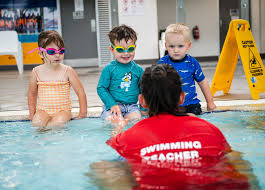
For swimmers aiming to improve their skills, training for competition offers a structured pathway to achieve advanced techniques and mental resilience. Competitive swimming training goes beyond basic techniques, focusing on endurance, stroke refinement, and race strategy, all of which contribute to better performance in the pool.
1. Enhances Stroke Technique
Competitive training emphasises stroke perfection, with a focus on minimising resistance and maximising efficiency in the water. Swimmers work on advanced techniques for each stroke—freestyle, backstroke, breaststroke, and butterfly—ensuring that each movement is refined and energy-efficient. Programs designed around training for competition offer valuable resources for honing these techniques under the guidance of experienced coaches.
2. Builds Endurance and Strength
Training sessions for competitive swimming involve exercises that increase both cardiovascular endurance and muscle strength. Swimmers perform drills that target specific muscle groups, improving power and stamina. By building endurance, swimmers are better prepared to maintain speed and technique throughout an entire race, often giving them an edge over their competitors.
3. Develops Race Strategies
Competitive swimming isn’t just about physical fitness; it also involves strategic planning. Training programs include race strategy practice, where swimmers learn how to pace themselves, optimise turns, and perform effective finishes. With a strong race plan, swimmers can manage their energy and perform at their peak in different competitive events.
4. Fosters Mental Resilience
Training for competition helps swimmers build mental toughness, teaching them to stay focused and manage stress during high-stakes events. Athletes often learn visualisation techniques, goal-setting, and stress management, all of which contribute to a resilient mindset. This mental strength is crucial for achieving consistent performance under pressure.
5. Encourages Team Dynamics and Support
Although swimming is often an individual sport, competitive training fosters a team environment where athletes support and motivate each other. Training as part of a team encourages accountability, builds camaraderie, and provides a source of encouragement, all of which contribute to improved individual performance.
6. Provides a Structured Pathway to Goals
Competitive training is typically goal-oriented, with structured routines and measurable progress milestones. By working through a defined training program, swimmers can track their improvements, celebrate achievements, and stay motivated to continue progressing.
Conclusion
Training for competition offers a well-rounded approach to skill improvement, combining physical, technical, and mental elements to build better swimmers. For those committed to reaching their full potential, competitive training provides the support, structure, and tools needed to excel in the sport.
